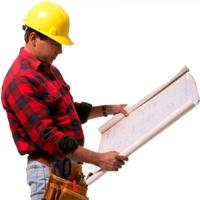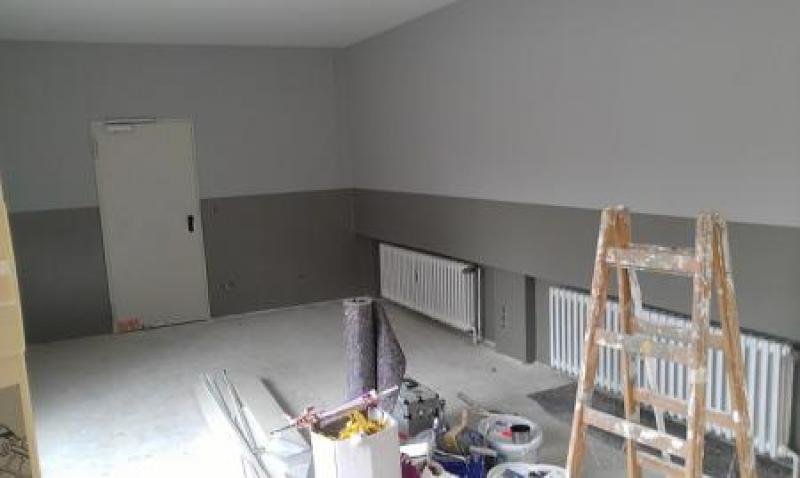The Must-Dos For Renovating Your Basement
by Paul on Apr 6, 2017
A basement is an excellent place to carve out some extra space for an office or a playroom. But not every basement is ideal for renovating. If you intend to redo your basement, taking steps to pre-renovate might save you in the long run. Most basements, especially older ones, weren’t built to be renovated. They can be more of a foundation than additional living space, so make sure to do these things before you spend money on a basement renovation, or you could find yourself underwater -- either financially or literally.
Plan the layout carefully
One of the biggest hurdles in a basement renovation can sometimes be the limitations of the space and the placement of things like water heaters, sump pumps, or even foundation walls. Since many things in the basement can’t be moved around for structural reasons, before you start anything, make sure that you create an outline and live with it for a bit. Things always look more spacious before the walls go up. A great design layout can maximize space, while a poor one can waste it. Make sure to use natural light to create a space that you want to live in.
Inspect things before you begin work
Many hazards might be lurking in your basement. If you are going to renovate, you want to make sure that everything is working properly, in a healthy living condition, and that the space isn't prone to flooding. The problem with a basement is that since you aren’t in it very often, you might unknowingly be oblivious to water leaks.
Make sure that the foundation is sound and doesn’t have any cracks. It is also a good idea to have a mold removal service inspect the rim, header joists, and floor joists, as well as the sill plates. Don’t assume that the floor is level. Depending on the flooring material you choose, having a level surface might be a very important structural need. Make sure to have an HVAC professional check out the basement’s ventilation to ensure that the air quality is okay for making it space where people can hang out.
Check for headroom
By code, in many areas, you need a minimum of seven feet of headroom for safety. If you don’t have it, you might have to rework ductwork or even consider having the foundation dug out to provide more headspace.
Sump pumps are a must
The worst thing that can happen after you renovate is the basement flooding. All your expenses and hard work can be completely undone with one good heavy rain. Before you begin any basement renovations, make sure that you have a fully functioning sump pump, or in some cases, two. Also, put guards on them so that if they aren’t working properly or there is a storm that shuts down your power, you are notified immediately to prevent damage.
Insulate pipes before you enclose them
Pipes can have condensation form on them that drips onto drywall and can cause mold. If you have any pipes that you are going to enclose, make sure to insulate them properly before you put walls up. Hot-water pipes need to be wrapped to increase their energy efficiency, and cold-water pipes need to be insulated to prevent condensation from leaking onto ceilings and drywall.
Leave space and access to equipment
When you are redoing your basement, make sure to leave enough space to get to equipment and appliances. That includes leaving access to them. Don’t box in your water heater, furnace, or sump pump so much so that you can’t get to them if you need to. If there is a problem, you don’t want to have to rip things out to repair equipment. Easy access is key.
Lighting is key
If you are going to redo a basement space, you can’t overlook lighting. Basements are typically dark due to limited window space. Make sure to light all areas, even those that seem far removed or out of the way. You want your basement to be an enjoyable area to live in. That includes having enough light to see.
If you are going to put money into redoing your basement area for extra living space, make sure you invest in it to make it livable. Doing the pre-renovation work to ensure that it is safe for living, that mishaps won’t happen, and that you plan ahead if they do, is the best way to make your basement a space that you and the entire family can enjoy.
Popular Articles
Three Places to Spend Money on the Exterior of Your Home
When you have the exterior of your home remodeled, you are investing, time, energy and convenience into the project and you want to make sure that...
105126 Views
Homemade Headboards-Make an Upholstered or Wooden Headboard
Homemade headboards can add a lot of personality to any bedroom. They can be coordinated with existing furniture and room decor or they can be the...
80247 Views
When to Use a Brush, Roller or Sponge Brush
Brushes are a good choice for painting trim and woodwork. They are also useful for cutting in the edges around the top and bottom edges and corners...
72888 Views
Creating a Cottage Kitchen with Bead Board
Kitchen decor can range from modern and bold to elegant and elaborate by using strategic kitchen pieces. One of the most popular decorating trends...
58659 Views
Gas Fireplace Diagnostics and Troubleshooting
Follow these steps for diagnosing and troubleshooting Gas Fireplaces repairs. For the average DIYer, this may seem intimidating, depending on the...
35682 Views
Latest Articles
Why Professional Boiler Repair is Essential for Home Safety and Comfort
Maintaining a warm and safe home environment is paramount for any homeowner. Your home's boiler system plays a critical role in this, but what...
on Nov 5, 2025
How to Keep Your Home Warm in the Winter
How to Keep Your Home Warm in the WinterAs winter approaches, keeping your home warm becomes a priority for comfort and health. Efficient heating...
on Oct 29, 2025
Why Reliable Furnace Repair is Essential for Winter Comfort
As the cold season approaches, homeowners recognize the critical role that a well-functioning furnace plays in ensuring a warm and cozy living...
on Oct 29, 2025
How Much Does it Cost to Take a Bath?
Plumbers know that a bath may seem like a relaxing luxury, but the real cost extends far beyond your water bill. The average soak uses 35 to 50...
on Apr 8, 2025
10 Concrete Patio Ideas on a Budget
A concrete patio can be a game-changer for your outdoor space. It is durable, versatile, and can be customized to fit your style. But what if you...
on Mar 25, 2025
Featured Articles
What Type of Licensed Contractor Should You Hire?
on Feb 28, 2017
Hire Contractors / Estimates

Looking for a specialty project? There are many types of contractors available for your home improvement needs. Finding the right type of...
Actions
Top Categories
- Garden / Landscaping / Patio — 264
- Kitchen / Bathrooms — 240
- Real Estate / Finance — 203
- Appliance / Repair — 186
- Interior Design / Decor — 184
- HVAC / Air Conditioning — 150
- Cleaning / Maintenance — 144
- Improvements / Remodeling — 131
- Plumbing / Basements — 118
- Floors / Tile / Hardwood — 116
- Safety / Security — 114
- Doors / Garages — 113
Articles Archive
More DIY Articles
Plumbing Services: How to Choose a Plumber
Having plumbing issues can give you headaches since they usually require a quick response (or they can rapidly get worse) and are often expensive...
Finding the Best Movers
Moving to a new home is often an exciting time for most, which is why it is essential to ensure the process of moving itself goes as smoothly as...
Giving Your Home a Green Foundation
Going green has never been so popular. But, this is for a good reason. The earth is struggling with the effects of human pollution and anything you...
Top 10 Mobile Home Skirting Ideas You Should Know
When considering mobile home skirting ideas, it is crucial that you choose on a product and material that enhances the curbside appeal and delivers...
Great Points to Know About the Convection Microwave
When you hear the term ‘convection microwave,’ you may think you heard wrong. After all, most people have heard of a microwave oven, and most...

